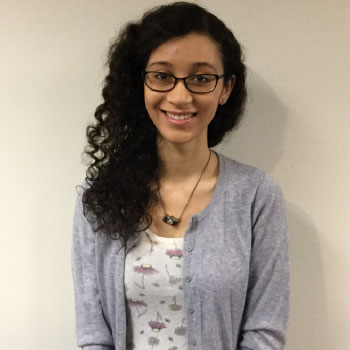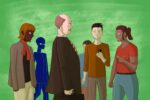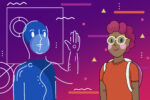In an age ruled by technology and information, it seems that the more humanity discovers, the more it fears. I mean, how often does someone see a poorly drawn cartoon about how “this generation” is too attached to their phones? (Answer: Too often.) This anxiety saturates today’s society in all spaces, especially in media. There are few stories dealing with artificial intelligence that don’t also contemplate the ultimate overthrow of humanity by their own robotic creations.
The word “robot” was first introduced in literature in 1920 by Karel Capek. Capek’s play, “R.U.R (Rossum’s Universal Robots),” depicts artificial beings who eventually learn violence from their human creators and seek to destroy them. Popularized by prolific science-fiction writer Isaac Asimov’s “Robot” series, the theme of robots interacting with their human creators in Frankenstein-like manners became prevalent. This can be seen as recently as HBO’s smash-hit “Westworld,” in which a theme park’s android “hosts” begin to develop consciousness and turn on the park’s visitors while eerily reciting Shakespeare.
Here’s where Marvel’s new comic, “Vision,” comes in. Its eponymous character has garnered recent popularity from the film “Avengers: Age of Ultron.” In the movie, the Vision is created by Ultron and Tony Stark accidentally, though in Marvel’s current comic universe, the Vision’s creation at Ultron’s hands is more intentional. Inhabiting a synthezoid body powered by an Infinity stone meant for Ultron, the Vision is Stark’s operating system, JARVIS, given life.
The Vision, since his first appearance in “The Avengers” comic in 1968, has always been a challenging character to pin down. His detached persona make it difficult for fans to sympathize with him. Attempts to humanize the Vision often come in the form of attaching Scarlet Witch, a mutant with the ability to alter reality, as a love interest. Rarely has focus been placed on the Vision as a character, and when it has, he follows the usual android-gone-bad scenario and gets destroyed.
One constant in all versions of the Vision is his desire to be normal.
The 2015 comic series “Vision,” created by Tom King, Michael Walsh, Gabriel Hernandez Walta and Jordie Bellaire, differs from most modern incarnations of heroes in Marvel’s ever-expanding universe. As the announcement of the Vision’s solo title was made just before the release of “Age of Ultron,” the comic was expected to be something more lighthearted, that catered to fans of the movies. Instead, the reader is given a thought-provoking, tragic drama starring characters who are supposed to be “just like everyone else” but can never be.
For reasons initially undisclosed, the Vision, accompanied by his new synthezoid family, has moved to Virginia to act as the Avengers’ liaison with the White House. The family he has created is oddly reminiscent of the white-picket-fence ideal, even though his wife, Virginia, son, Vin, and daughter, Viv, all share the Vision’s red appearance, powers, donated brain wave patterns from unnamed sources and blank, white eyes.
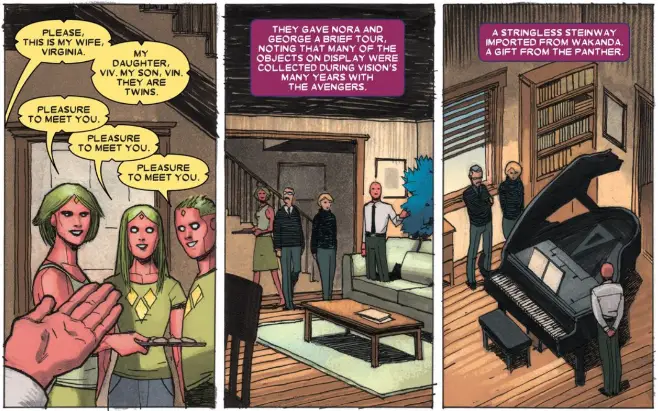
Despite the comic’s title, the Vision rarely appears in the story compared to the other members of his family. It could be argued that the true main character of the comic is his wife, Virginia, whose actions and mistakes drive the plot and lead to its ultimate conclusion.
The reader witnesses the Vision family attempting to assimilate into the microcosm of suburbia, guided through the tale by a seemingly omniscient narrator speaking from a time after the events of the comic have already passed, injecting a morose and often doom-tinged tone into any moment that threatens to feel too cheerful. When neighbors come to greet the Visions, the narrator remarks, in a rather detached fashion, that eventually these neighbors will burn in a house fire, and that one of the Visions will be responsible for their deaths. How nice.
The Visions learn the hard way that acting “normal” is incredibly difficult. Aside from the obvious physical differences (the children, like their father, can phase through walls and simply fly to school), the Visions cannot fully realize the same emotional spectrum as humans. It is their efforts to do so that create and exacerbate the tragic events of their suburban existence.
A particularly notable scene in the comic depicts a fight between Vin and a classmate who makes fun of his sister, Viv. The narrator reveals a previous conversation between Vin and Viv, in which they innocently debate their similarities to humans. While Vin asserts that they do not share many qualities with humans, Viv believes otherwise. As Vin chokes the life out of his classmate, it is shown that the similarity lies in placing pressure on the human carotid artery. Like robots, Viv states, humans can also be “turned off with the press of a button.”
Much of the comic’s tension is derived from the brief moments where the reader is forced to contend with the fact that yes, the Visions are not human and they themselves know this, yet they display jarringly human-like emotion when the wellbeing of their family is threatened. Again and again, they are thrown into situations that their synthezoid processors are not equipped to handle.
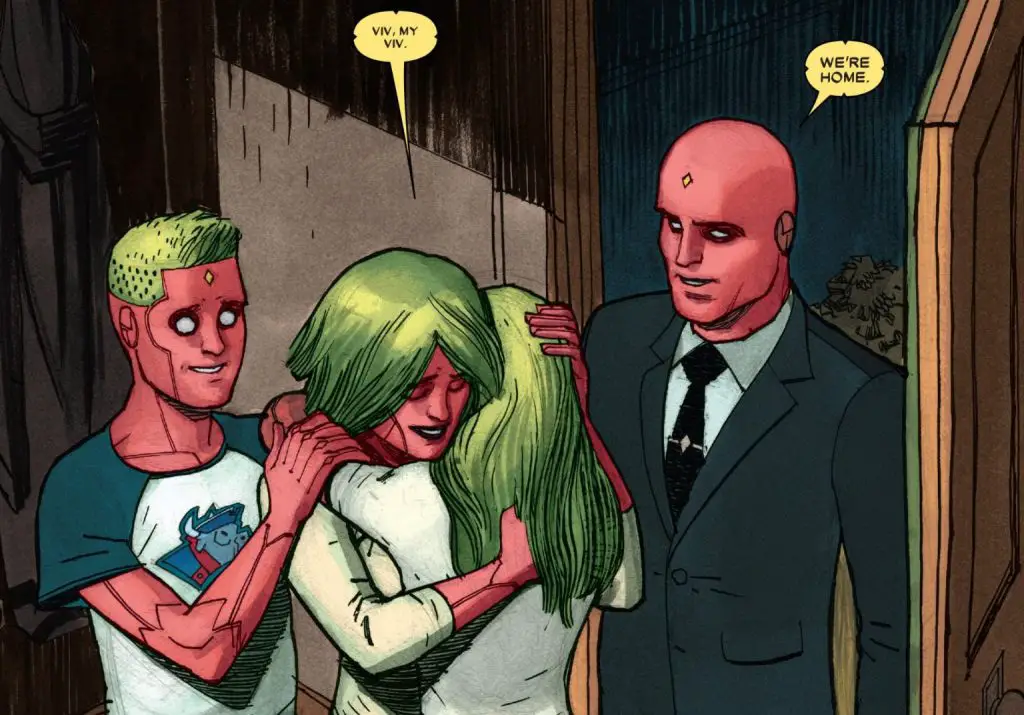
The decision to protect their family over assimilating properly into human society has deadly consequences, and brings to bear the age-old fear of machine triumphing over man. The Avengers themselves are shown to mistrust the Vision when he appears to care too much for the family he created. It’s in the family’s very desire to protect each other that they display the strongest resemblance to humanity, while simultaneously distancing themselves through increasingly horrifying acts.
“Vision” is easily one of Marvel’s best titles, which is an unexpected feat for a story that appears to be a money grab. Though the Vision’s cinematic counterpart (and the weird semi-romance they’re introducing with Scarlet Witch) is a little lackluster, all is remedied in the chilling solo story.
The comic ends with big questions answered and bigger questions taking their place. The final note of “Vision” is at once hopeful and sad. The uncertain fate of the Visions post-comic doesn’t quite answer the pervasive question of whether artificial intelligence and humanity can intermingle peacefully, but the story provides a refreshing take on a subject that had previously seemed done to death.




